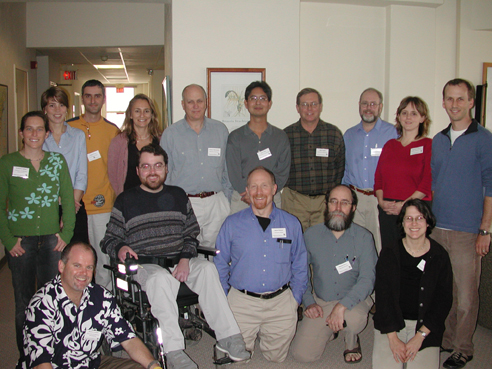NCEAS Working Groups
Putting ocean wilderness on the map: Building a global GIS atlas of pristine marine environments
Project Description
Terrestrial conservation has long recognized the need for setting global priorities, and a common strategy for such efforts has been to focus on wilderness, or pristine, areas. Only recently have conservation groups begun to consider marine ecosystems, and efforts to take a global approach remain nascent at best. In order to move forward, conservation groups need global-scale data on which to base their priority models, but such data are currently highly dispersed and poorly synthesized. We propose a working group to address two questions that should greatly help close this gap: first, what is a pristine marine ecosystem, and second, where are the remaining pristine areas of the world¿s oceans? The definition of pristine will be based on an ecologically rigorous assessment of anthropogenic influences on marine ecosystems, and will guide us in identifying existing global-scale datasets that we will use to map the distribution of pristine areas across all marine environments. Our final product will be a GIS-based, interactive atlas of the pristine and impacted areas of the ocean that can be used as a practical tool by conservation groups in developing marine conservation priority models, by academic scientists in future ecological and biogeographic research, and by educators in efforts to increase awareness of ocean conservation needs.

Principal Investigator(s)
Benjamin S. Halpern, Hunter S. Lenihan, Fiorenza Micheli, Kimberly A. Selkoe
Project Dates
Start: January 26, 2005
End: July 15, 2008
completed
Participants
- Sean Benison
- University of California, Santa Barbara
- Tim Boucher
- The Nature Conservancy
- Caterina D'Agrosa
- Wildlife Conservation Society
- Helen Fox
- World Wildlife Fund
- Rod M. Fujita
- Environmental Defense Fund
- Benjamin S. Halpern
- University of California, Santa Barbara
- Dennis Heinemann
- Ocean Conservancy
- Carrie V. Kappel
- Stanford University
- Hunter S. Lenihan
- University of California, Santa Barbara
- Fiorenza Micheli
- Stanford University
- Ransom A. Myers
- Dalhousie University
- Matthew Perry
- Humboldt State University
- Eric W. Sanderson
- Wildlife Conservation Society
- Kimberly A. Selkoe
- University of California, Santa Barbara
- Mike Smith
- Conservation International
- Robert S. Steneck
- University of Maine
Products
-
Journal Article / 2007
Evaluating and ranking the vulnerability of global marine ecosystems to anthropogenic threats
-
Data Set / 2007
Ranking and mapping the impact of human activities on global ocean ecosystems
-
Journal Article / 2008
A global map of human impact on marine ecosystems
-
Journal Article / 2008
Diminishing sea ice - Response
-
Journal Article / 2009
Global priority areas for incorporating land-sea connections in marine conservation
-
Book Chapter / 2010
Human impacts on marine ecosystems
-
Journal Article / 2010
Marine Reserves Special Feature: Placing marine protected areas onto the ecosystem-based management seascape
-
Journal Article / 2009
In the zone: Comprehensive ocean protection
-
Journal Article / 2013
Cumulative human impacts on Mediterranean and Black Sea marine ecosystems: Assessing current pressures and opportunities
-
Journal Article / 2008
Response to comment on a global map of human impact on marine ecosystems
